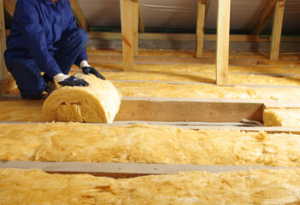Your roof is the barrier between your home and the elements. It protects you from obvious dangers like severe weather events, falling tree branches, and excess moisture that could lead to mold.

Regular roof maintenance keeps your roof healthy and functioning optimally. It prevents minor problems from getting bigger and allows you to keep your manufacturer’s warranty. Visit https://redstickroofing.com/baton-rouge to learn more.
When hot air builds up in an attic, it can affect how well your home cools during the summer. It can also increase heating costs and cause problems in the winter when it condenses into ice dams that damage the roof. The best way to prevent both is with proper ventilation.
A ventilation system that allows a uniform flow of cool air to sweep the underside of your roof sheathing solves both heat and moisture problems. In the warm months, a ventilation system exhausts the heat from your home before it can reach the living space below and in the cold months, it exchanges warm moist air with cooler, dry air that prevents ice dams from forming on the eave of the roof.
Proper attic ventilation can help reduce cooling costs, extend shingle life and make your home more comfortable all year round. Whether you choose a natural or mechanical ventilation system, it is important to have an equal number of exhaust vents along the roof ridge and intake vents in the soffit. Also, the size and position of these vents must be sized appropriately to ensure they can adequately move air to keep your attic properly ventilated.
A professional can help you select the right ventilation for your home. They can also make sure the vents aren’t blocked by debris or insulation. If you are a DIYer, you should periodically inspect your attic for signs of blocked vents, such as damp or musty insulation.
If you don’t have adequate attic ventilation, you can install a new system. Static vents (sometimes called turtle or box vents) sit on the roof ridge and protrude from the roofline. They are available in a variety of colors and styles to match your roofing and home design. A popular choice is a turbine vent, which looks like a fan and uses the wind to power an enclosed fan to suck hot air out of the attic. Other options include ridge vents with baffles to prevent rain, snow and pests from entering and power vents that use electricity to constantly run.
Clean Debris
A dirty roof is not only unsightly but it also degrades the surface materials of your roofing system. If twigs, leaves or debris build up on your roof it can prompt algae growth (which causes black streaking) and allow moisture, bugs and vermin to penetrate the structure of the roofing materials.
If the accumulated debris blocks your gutters, it can cause water to back up and flow into areas of the home that aren’t designed to receive water. This could lead to a number of problems including wood rot and mold. Clogged gutters may also cause the shingles to become unfastened, creating openings that allow air and water to penetrate the roofing materials.
As the seasons change, debris accumulates on roofs. It is important to regularly sweep, blow or wash off the debris that builds up on a roof. This is something that most homeowners can do themselves and it doesn’t require climbing on the roof itself. The debris can include things like twigs, leaves, trash and animal droppings.
In addition to the obvious benefits of cleaning up the debris, it is also important to do a visual inspection of the roof. This is best done with a pair of binoculars from the ground or from a ladder instead of walking on the roof itself. This will allow you to see if there are any spots where shingles are missing or sagging. It is also a good time to look for moss, mildew and algae that can degrade the shingle surfaces.
During the inspection you can also look at the flashing (the strips of sheet metal used to waterproof the roof where two sections meet) and check for dents, gaps or rust. You can also check the soffit and fascia to ensure that they are in good condition and are properly fastened to the walls of the house. You can also inspect the chimney and any skylights and vents for any damage or deterioration.
Shingles
Shingles are the primary element of your roof that protects it from sun and heat damage. They do this by reflecting light and blocking out the sun’s UV rays. Over time, though, the constant exposure can cause shingles to lose their ability to do this effectively, which leads to heat and sun damage inside your home. Regular shingle maintenance checks are the best way to prevent this type of damage from happening.
If you notice that the granules in your shingles are starting to come off, this is a sign that the shingles are nearing the end of their life and need to be replaced. It’s also a good idea to check the caulking around chimneys and vent pipes on your roof on an annual basis to ensure it is still working properly to prevent leaks from occurring.
High winds can damage your roof and cause shingles to loosen or even fall off. It’s a good idea to have your roof inspected after a major storm, as this can help you catch any damage that might not have been visible from the ground.
If the water damage from a leaky roof is allowed to enter your home, it can cause problems with insulation, drywall, and wood framing. It can also damage electrical systems, which is a serious safety hazard. If you notice signs of a leak, such as water marks on the ceiling or walls, it’s important to get these repairs done right away.
Another issue that can occur in your home from a leaking roof is the growth of mold and mildew, which can also be dangerous to your health. It’s essential to have a professional inspect your roof regularly for mold and mildew, as it can indicate a lack of ventilation or other issues with your roof.
Your roof is exposed to the elements daily, so it’s essential to keep up with shingle maintenance to prevent damage and maintain your home’s value. For more information about keeping your shingles in top condition, contact us today! We can provide a complete inspection and any necessary roof repairs before it’s too late.
Flashing
Flashing is essentially your roof’s last line of defense against leaks. This sheet of thin, impervious material prevents moisture from seeping into walls and ceilings where it might otherwise damage the structure. It is often used in areas where the roof intersects or projects, such as chimneys, dormers, vent pipes, and window openings. It also covers the seams where two pieces of roof materials meet and acts as a water barrier to bridge potential gaps.
Leaks caused by cracked or broken flashing are one of the most common problems with a home’s roof. These issues can result from various factors, including inclement weather and physical damage to the roof or surrounding structures. If you have a leaky roof, it is important to address the issue quickly to minimize long-term damage and costly repairs.
When a roof leaks, moisture becomes trapped in the attic and can wreak havoc on the wooden sheathing, underlayment, trusses, and rafters. Eventually, these structural elements may rot and lead to a collapsed roof. By preventing water from entering the house, flashing increases the lifespan of the roof and protects the building’s interior.
The condition of flashing is crucial to your home’s protection from the elements and moisture-induced damage. This is why it is vital to keep up with routine maintenance and inspections.
Regular inspections should include checking the mortar or caulk that seals the roof joints. This should be replaced as needed to ensure that no water is leaking into the home. It is also a good idea to check for moss or algae on the flashing and reseal it as necessary.








